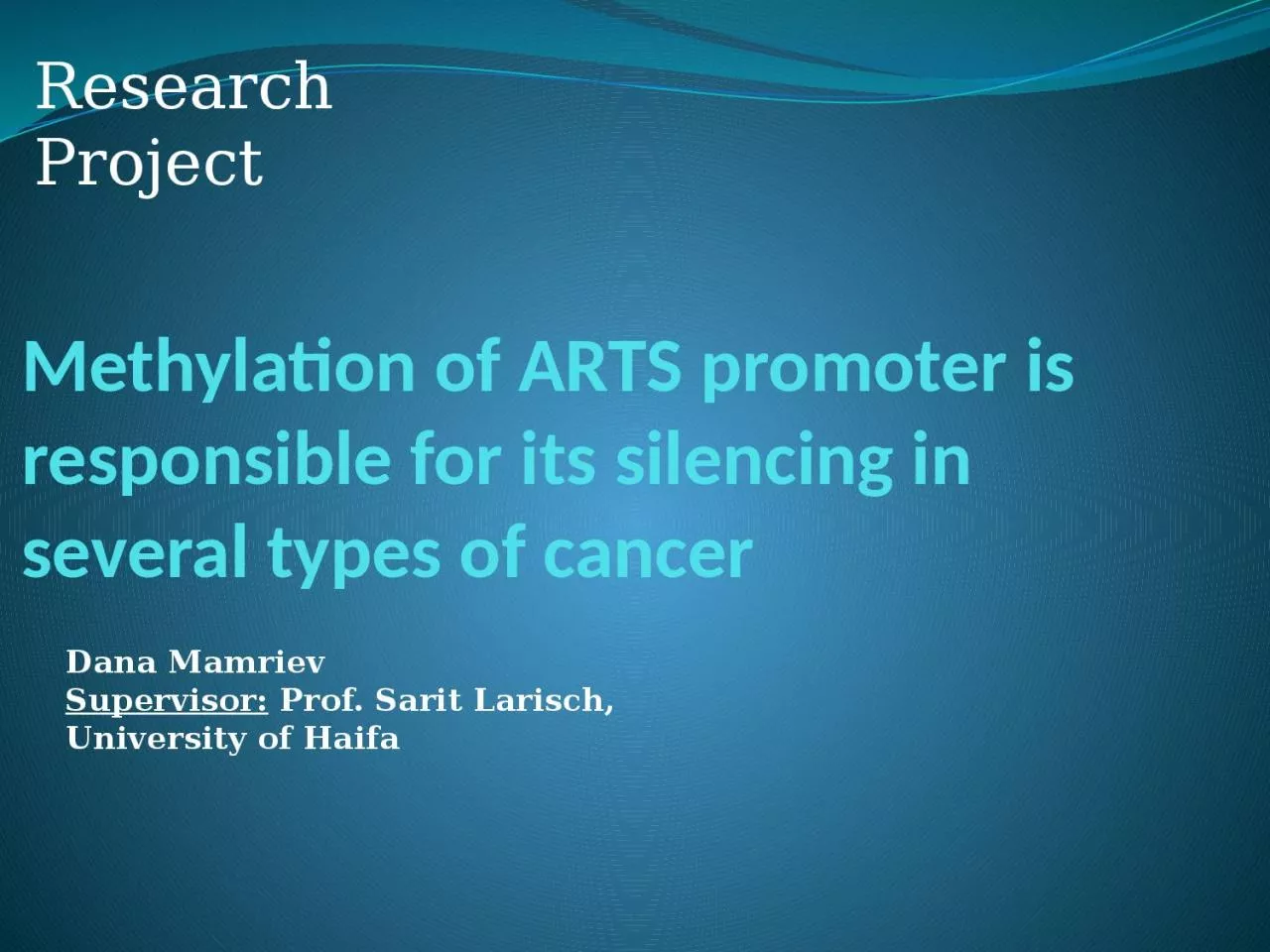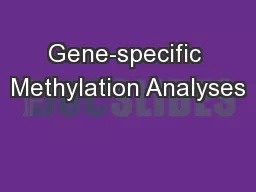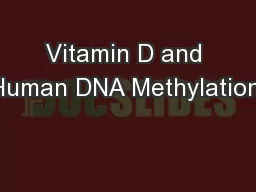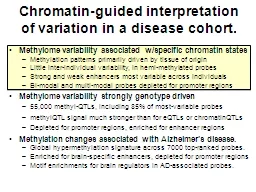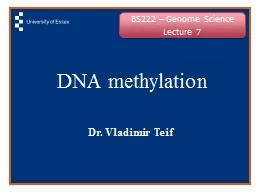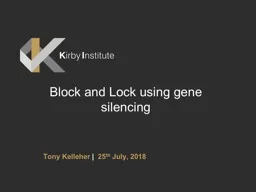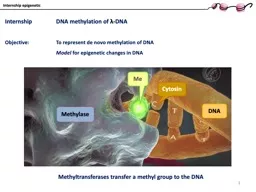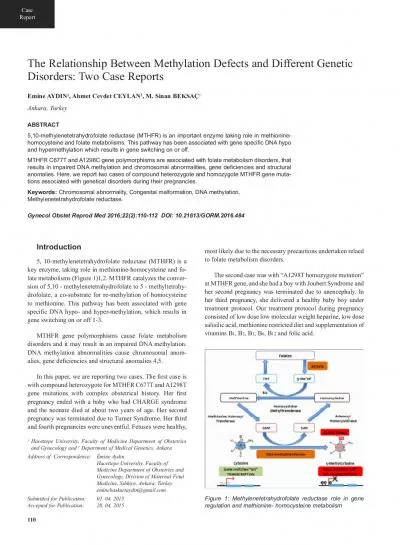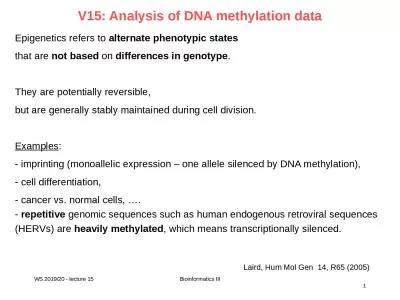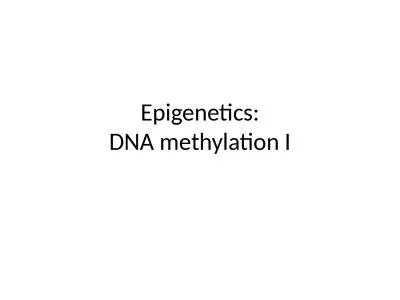PPT-Methylation of ARTS promoter is responsible for its silencing in several types of cancer
Author : anderson | Published Date : 2024-01-03
Dana Mamriev Supervisor Prof Sarit Larisch University of Haifa Research Project Programmed cell death Apoptosis Essential process occurring in all multicellular
Presentation Embed Code
Download Presentation
Download Presentation The PPT/PDF document "Methylation of ARTS promoter is responsi..." is the property of its rightful owner. Permission is granted to download and print the materials on this website for personal, non-commercial use only, and to display it on your personal computer provided you do not modify the materials and that you retain all copyright notices contained in the materials. By downloading content from our website, you accept the terms of this agreement.
Methylation of ARTS promoter is responsible for its silencing in several types of cancer: Transcript
Download Rules Of Document
"Methylation of ARTS promoter is responsible for its silencing in several types of cancer"The content belongs to its owner. You may download and print it for personal use, without modification, and keep all copyright notices. By downloading, you agree to these terms.
Related Documents

